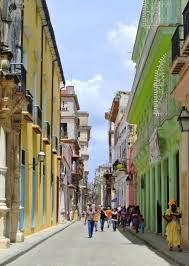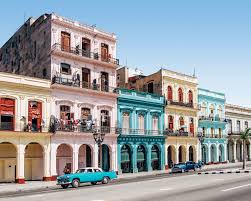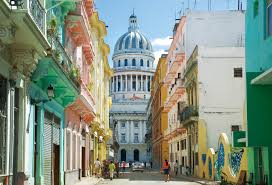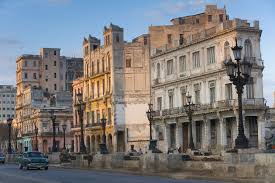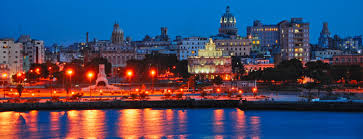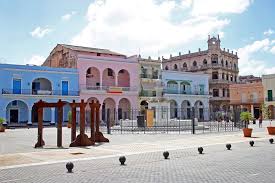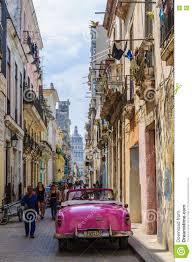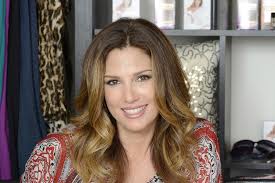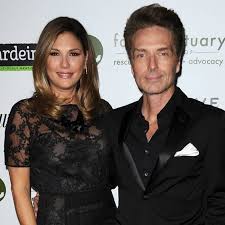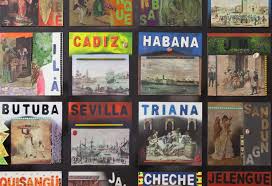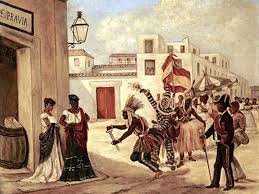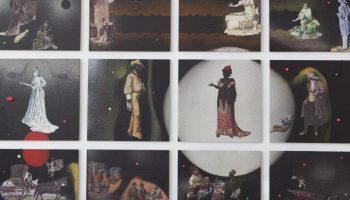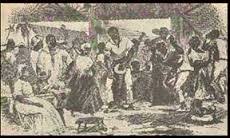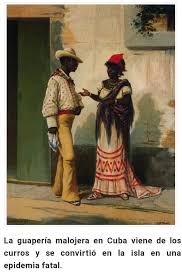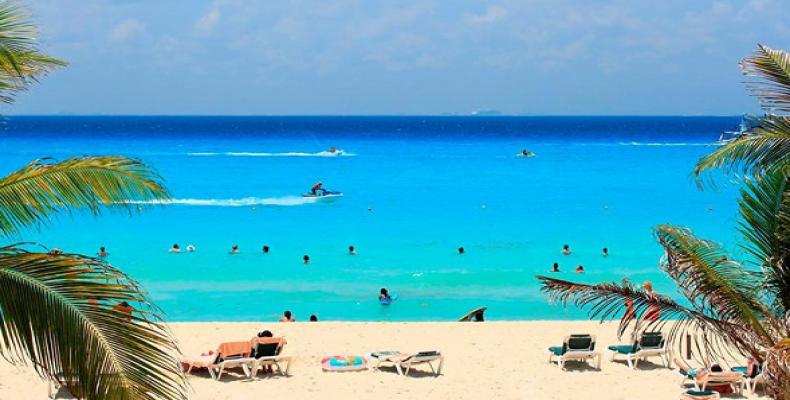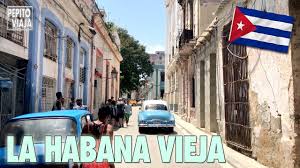 OLD HAVANA, CUBA, SECOND HIGHEST POPULATION DENSITY OF THE CAPITAL.
OLD HAVANA, CUBA, SECOND HIGHEST POPULATION DENSITY OF THE CAPITAL.
Old Havana, (La Habana Vieja in Spanish), contains the core of the original city of Havana, with more than 2,000 hectares it exhibits almost all the Western architectural styles seen in the New World. Is the city-center (downtown) and one of the 15 municipalities (or boroughs) forming Havana, Cuba. It has the second-highest population density in the city and contains the core of the original city of Havana. The positions of the original Havana city walls are the modern boundaries of Old Havana. In 1982, La Habana Vieja was inscribed in the UNESCO World Heritage List. A safeguarding campaign was launched a year later to restore the authentic character of the buildings.
https://youtu.be/dAlWhcJfq6M
(Press ^ Here)
La Havana Vieja, Cuba.
HISTORY
La Habana Vieja was founded by the Spanish in 1519 in the natural harbor of the Bay of Havana. It became a stopping point for the treasure-laden Spanish Galleons on the crossing between the New World and the Old World. In the 17th century, it was one of the main shipbuilding centers. The city was built in baroque and neoclassic style.
Many buildings have fallen in ruin but a number are being restored. The narrow streets of Old Havana contain many buildings, accounting for perhaps as many as one-third of the approximately 3,000 buildings found in Old Havana.
Old Havana is the ancient city formed from the port, the official center, and the Plaza de Armas. Alejo Carpentier called Old Havana the place “de las columnas” (of the columns). The Cuban government is taking many steps to preserve and to restore Old Havana, through the Office of the city historian, directed by Eusebio Leal. Old Havana and its fortifications were added to the UNESCO World Heritage List in 1982. The beauty of Old Havana City attracts millions of tourists each year who enjoy its rich old culture and folk music.
In spring 2015, the largest open-air art exhibition ever in Cuba took in front of the basilica on the Plaza San Francisco de Asis: Over eight weeks the United Buddy Bears visited Havana. United Buddy Bears exhibitions are part of a non-commercial and non-profit project. The main aim is to promote the idea of tolerance and mutual understanding between countries, cultures, and religions and to communicate a vision of a future peaceful world.
MAIN SIGHTS
– The Malecón is the avenue that runs along the seawall at the northern shore of Havana, from Old Havana to the Almendares River.
– The Paseo del Prado, Havana is the street that forms the western edge of Old Havana, being its boundary with Centro Habana.
– Castillo del Morro, a picturesque fortress guarding the entrance to Havana bay. The construction of the castle Los Tres Reyes del Morro owed to the step along in Havana of the English pirate Sir Francis Drake. The king of Spain arranged its construction on a big stone which was known by the name of El Morro. He sent the field master Juan de Texeda, accompanied by the military engineer Battista Antonelli, who came to Havana in 1587 and began the task at once.
– La Cabaña fortress, located on the east side of Havana Bay. It impresses with its 18th-century walls, constructed at the same time as El Morro. Every night at 9 p.m., soldiers dressed in uniforms of the era shoot from here, the “el cañonazo de las Nueve”, (gunshot of the nine). It goes off every day, to warn of the closing of the doors of the wall that surrounded the city.
– San Salvador de la Punta Fortress, On the shore opposite to the Castle of El Morro, at the beginning of the curve of El Malecon, rises the fortress of San Salvador de la Punta. It was constructed in 1590, and in 1629 the Chapter of Havana decided that to defend better the port, to join it, at night, with the El Morro by using a thick chain that prevented the entry of enemy ships.
– Castillo de la Real Fuerza, The fortress or (lit.) Castle of the Royal Army is another big monument that closes the Plaza de las Armas. It was the first big fortification of the city, initiated in 1558 on the ruins of an ancient fortress. In the same year, the Crown sent to Cuba the engineer Bartolomé Sanchez, supervised by 14 official and main stonemasons in order to reconstruct the castle, which had been set fire and destroyed by the French corsair Jacques de Sores.
– Catedral de San Cristóbal, the most prominent building on the Plaza de la Catedral. The cathedral was raised on the chapel after 1748 by the order of the bishop from Salamanca, Jose Felipe de Trespalacios. It is one of the most beautiful and sober churches of the American baroque.
– National Capitol, styled after the Panthéon (Paris), looking similar to the U.S. Capitol.
– Galician Center, Central Park, The Galician Center, of neo-baroque style was established as a social club of the Galician emigrants between 1907 and 1914. Built on the Theater Tacon (nowadays Great Theater of Havana), it was open during the Carnival of 1838 with five masked dances.
– Plaza de Armas – the main touristic square. The origin of its name is military since from the end of the 16th century the ceremonies and the military events took place here.
– Gran Teatro de la Havana, the Great Theater of Havana is famous, particularly for the acclaimed National Ballet of Cuba and its founder Alicia Alonso. It sometimes performs the National Opera. The theater is also known as concert hall, Garcia Lorca, the biggest in Cuba.
– The Museum of the Revolution, located in the former Presidential Palace, with the boat Granma on display in front of the museum.
– San Francisco de la Habana Basilica, Habana Vieja, The set of church and convent of San Francisco de Asis, built in the year 1608 and reconstructed in 1737.
In 2008, Hurricane Ike destroyed many structures in Old Havana, overturning years of conservation work directed at the iconic antiquated buildings of the area. Not only did it damage historic buildings, but it forced many of Old Havana’s residents to flee for safety. The threats that hurricanes pose adds to an already tenuous state for Old Havana’s many historic buildings. Age, decay, and neglect combine with natural factors in a complex set of threats to the long-term preservation of this historic old town.
 LA HABANA VIEJA, CUBA, SEGUNDA POBLACIÓN MÁS ALTA EN DENSIDAD DE LA CAPITAL.
LA HABANA VIEJA, CUBA, SEGUNDA POBLACIÓN MÁS ALTA EN DENSIDAD DE LA CAPITAL.
La Habana Vieja, contiene el núcleo de la ciudad original de La Habana, con más de 2.000 hectáreas exhibe casi todos los estilos arquitectónicos occidentales vistos en el Nuevo Mundo. Es el centro de la ciudad (centro) y uno de los 15 municipios (o distritos) que forman La Habana, Cuba. Tiene la segunda densidad de población más alta de la ciudad y contiene el núcleo de la ciudad original de La Habana. Las posiciones de las murallas originales de la ciudad de La Habana son los límites modernos de La Habana Vieja. En 1982, La Habana Vieja fue inscrita en la Lista del Patrimonio Mundial de la UNESCO. Un año después se lanzó una campaña de salvaguardia para restaurar el carácter auténtico de los edificios.
https://youtu.be/2zy0icY7HnY
(Presione ^ Aqui)
La Habana Vieja, Cuba.
HISTORIA
La Habana Vieja fue fundada por los españoles en 1519 en el puerto natural de la Bahía de La Habana. Se convirtió en un punto de parada para los galeones españoles cargados de tesoros en el cruce entre el Nuevo Mundo y el Viejo Mundo. En el siglo XVII fue uno de los principales centros de construcción naval. La ciudad fue construida en estilo barroco y neoclásico.
Muchos edificios se han derrumbado, pero algunos están siendo restaurados. Las calles estrechas de La Habana Vieja contienen muchos edificios, lo que representa quizás hasta un tercio de los aproximadamente 3,000 edificios que se encuentran en La Habana Vieja.
La Habana Vieja es la ciudad antigua formada por el puerto, el centro oficial y la Plaza de Armas. Alejo Carpentier llamó a La Habana Vieja el lugar “de las columnas” (de las columnas). El gobierno cubano está dando muchos pasos para preservar y restaurar La Habana Vieja, a través de la Oficina del Historiador de la Ciudad, que dirige Eusebio Leal. La Habana Vieja y sus fortificaciones se agregaron a la Lista del Patrimonio Mundial de la UNESCO en 1982. La belleza de la Ciudad de la Habana Vieja atrae a millones de turistas cada año que disfrutan de su rica cultura antigua y música folclórica.
En la primavera de 2015, la exposición de arte al aire libre más grande jamás realizada en Cuba tuvo lugar frente a la basílica en la Plaza San Francisco de Asís: durante ocho semanas los United Buddy Bears visitaron La Habana. Las exhibiciones de United Buddy Bears son parte de un proyecto no comercial y sin fines de lucro. El objetivo principal es promover la idea de tolerancia y entendimiento mutuo entre países, culturas y religiones y comunicar una visión de un futuro mundo pacífico.
PRINCIPALES VISTAS
* – El Malecón es la avenida que bordea el malecón en la costa norte de La Habana, desde La Habana Vieja hasta el río Almendares.
* – El Paseo del Prado, La Habana es la calle que forma el borde occidental de La Habana Vieja, siendo su límite con Centro Habana.
* – Castillo del Morro, una pintoresca fortaleza que custodia la entrada a la bahía de La Habana. La construcción del castillo Los Tres Reyes del Morro se debe al paso en La Habana del pirata inglés Sir Francis Drake. El rey de España dispuso su construcción sobre una gran piedra que se conocía con el nombre de El Morro. Envió al maestro de campo Juan de Texeda, acompañado del ingeniero militar Battista Antonelli, quien llegó a La Habana en 1587 e inició de inmediato la tarea.
* – Fortaleza La Cabaña, ubicada en el lado este de la Bahía de La Habana. Impresiona por sus murallas del siglo XVIII, construidas al mismo tiempo que El Morro. Todas las noches a las 21 horas, soldados vestidos con uniformes de la época disparan desde aquí, el cañonazo de las Nueve, (disparo de los nueve). Suena todos los días, para avisar del cierre de las puertas de la muralla que rodeaba la ciudad.
* – Fortaleza de San Salvador de la Punta, En la orilla opuesta al Castillo de El Morro, al inicio de la curva de El Malecón, se levanta la fortaleza de San Salvador de la Punta. Fue construido en 1590, y en 1629 el Capítulo de La Habana decidió que, para defender mejor el puerto, se uniera, de noche, con El Morro mediante una gruesa cadena que impedía el ingreso de barcos enemigos.
* – Castillo de la Real Fuerza, La fortaleza o (lit.) Castillo del Real Ejército es otro gran monumento que cierra la Plaza de las Armas. Fue la primera gran fortificación de la ciudad, iniciada en 1558 sobre las ruinas de una antigua fortaleza. En el mismo año, la Corona envió a Cuba al ingeniero Bartolomé Sánchez, supervisado por 14 canteros oficiales y principales, para reconstruir el castillo, que había sido incendiado y destruido por el corsario francés Jacques de Sores.
* – Catedral de San Cristóbal, el edificio más destacado de la Plaza de la Catedral. La catedral fue levantada sobre la capilla después de 1748 por orden del obispo de Salamanca, José Felipe de Trespalacios. Es una de las iglesias más bellas y sobrias del barroco americano.
* – Capitolio Nacional, estilo Panthéon (París), parecido al Capitolio de los Estados Unidos.
* – Centro Gallego, Parque Central, El Centro Gallego, de estilo neobarroco se constituyó como club social de los emigrantes gallegos entre 1907 y 1914. Edificado sobre el Teatro Tacón (hoy Gran Teatro de La Habana), estuvo abierto durante el Carnaval de 1838 con cinco bailes de máscaras.
* – Plaza de Armas – la principal plaza turística. El origen de su nombre es militar ya que desde finales del siglo XVI se desarrollaban aquí las ceremonias y los actos militares.
* – Gran Teatro de la Habana, el Gran Teatro de La Habana es famoso, particularmente por el aclamado Ballet Nacional de Cuba y su fundadora Alicia Alonso. A veces realiza la Ópera Nacional. El teatro también es conocido como sala de conciertos García Lorca, la más grande de Cuba.
* – El Museo de la Revolución, ubicado en el antiguo Palacio Presidencial, con el barco Granma en exhibición frente al museo.
* – Basílica de San Francisco de la Habana, Habana Vieja, Conjunto de iglesia y convento de San Francisco de Asís, construido en el año 1608 y reconstruido en 1737.
En 2008, el huracán Ike destruyó muchas estructuras en La Habana Vieja, volcando años de trabajo de conservación dirigido a los icónicos edificios anticuados de la zona. No solo dañó edificios históricos, sino que obligó a muchos de los residentes de La Habana Vieja a huir en busca de seguridad. Las amenazas que plantean los huracanes se suman a un estado ya frágil para los muchos edificios históricos de La Habana Vieja. La edad, el deterioro y el abandono se combinan con factores naturales en un complejo conjunto de amenazas para la preservación a largo plazo de este casco histórico.
Agencies/ Wiki/ Various/ Internet Photos/ YouTube/ Arnoldo Varona/ www.TheCubanHistory.com
THE CUBAN HISTORY, HOLLYWOOD.



